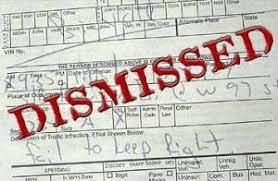Depending on a person’s age, the legal alcohol limit in Ohio varies. The legal limit is typically 0.08% for those over 21 and 0.02% for those under 21. A blood, breath or urine test will be required if you are detained or charged with a DUI or OVI in Columbus. Furthermore, Ohio’s Dram Shop Act limits the sale of alcohol to persons under 21.
This article provides basic information on Legal Alcohol limits in Ohio and more.
Legal Alcohol Limit in Ohio: What Is BAC Level?
A person’s BAC tends to increase as they consume more alcohol. “Blood alcohol concentration” (BAC) refers to how much alcohol is in a person’s blood. This is used to gauge their drunkenness and determine if they are over the Ohio legal limit. Therefore, their BAC increases as they drink more alcohol.
Determining BAC: Legal Alcohol Limit in Ohio
Most police in Ohio use a breathalyzer to detect if a person is above the legal limit for alcohol since they are easier to use in the field. These require the motorist to blow into a gadget, which yields a breath alcohol content, which is then used to calculate BAC.
Individual BAC
Note that the relationship between blood alcohol content and alcohol consumption varies from person to person. In Ohio, a young, tiny lady can consume two standard drinks and exceed the legal limit, whereas an older, bulkier guy can consume the same number of drinks and remain within the limit. BAC tests are so popular because they are the most reliable at identifying an individual’s actual state of drunkenness.
Legal Alcohol Limit in Ohio: Drunk Driving Penalties in Ohio
- First-time DWI offenders risk up to six months in prison and fines ranging from $375 to $1,075. The suspension time for a driver’s license ranges from six months to three years.
- Again, a second DWI within six years of the first conviction carries a penalty of up to six months in prison and a fine ranging from $525 to $1,625. The suspension of a driver’s license can last from one to five years.
- Finally, a third DWI within six years of previous convictions carries a maximum sentence of one year in prison and a fine of $850 to $2,700. Two to ten years are the range for suspending a driver’s license.
Legal Alcohol Limit in Ohio: Restrictions on Driving and Ignition Interlock
An offender could be granted restricted driving rights. Most of the time, granting restricted driving privileges requires the offender to employ an ignition interlock system.
Drivers of Commercial Vehicles
A commercial driver found guilty of DWI while operating any vehicle will also face further consequences under Ohio’s DWI legislation, including a one-year ban from operating commercial vehicles.
Under-21 Drivers
A fourth-degree misdemeanor is committed by an underage motorist who gets their first DWI while operating their vehicle with a blood alcohol content of at least.02 but less than.08. A fourth-degree misdemeanor carries a maximum sentence of 30 days in prison and a maximum fine of $250. The suspension of a driver’s license can last from three months to two years.
It is a third-degree misdemeanor for an underage driver to incur a second DWI while operating a vehicle with a blood alcohol content (BAC) of at least—0.2 but less than.0.8 within a year of the first incident. A third-degree misdemeanor carries a maximum prison sentence of 60 days and a maximum fine of $500.
Legal Alcohol Limit in Ohio: What is the Dram Shop Act in Ohio?
According to Ohio’s Dram Shop Act, a person who sustains harm as a result of an intoxicated person’s actions may pursue legal action against the owner of the liquor license or the permit holder’s employee who provided the intoxicated person with alcohol if the incident took place on the owner’s property or in a parking lot under their control and the harm was directly attributable to the owner’s negligence or the negligence of their employee.
Suppose the permit holder or its employee knowingly sold alcohol to a noticeably intoxicated person or a person under 21, and the person’s intoxication directly contributed to the injury.
Criminal Repercussions for Selling or Giving Alcohol to a Minor (Under21)
Note again that selling or giving alcohol to a person under 21 is illegal in Ohio. The maximum sentence for this offense is sixty days in jail, a fine ranging from $500 to $1,000, or both.
Summary:
You will be charged with OVI if your test results are higher than 0.08 in Ohio. This is a higher category, and you are liable to additional obligatory DUI fines if your BAC is over 0.17.
Frequently Asked Questions
Is 1.3 alcohol level high?
Obvious physical impairment and lack of judgment (0.10-0.12%). Slurred speech is possible. because your blood alcohol content is between 0.13 and 0.15%, which is pretty high. You can have impaired vision, loss of balance and coordination, and dysphoria (anxiety or restlessness).
How many drinks is 0.08 alcohol level?
Your BAC increases by around 0.02 percent for every drink you have, so it takes four to five drinks to get a BAC of 0.08 percent.
How bad is a 3.0 blood alcohol level?
BAC 0.30% to 0.40%: If your blood alcohol content is in this range, you’re probably suffering from alcohol poisoning, a condition that might be fatal, and you might even lose consciousness. BAC more than 0.40%: This is a blood alcohol content that may be lethal. You run the chance of going into a coma and passing away from respiratory arrest.
The highest BAC ever recorded
1.480 BAC. A Polish man’s BAC was 1.480% following an automobile accident that left significant injuries in its wake. In recorded history, that is the highest BAC ever.
RELATED ARTICLES
VEHICULAR ASSAULT: Definition and Penalties In Ohio



